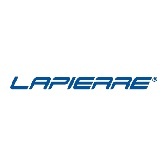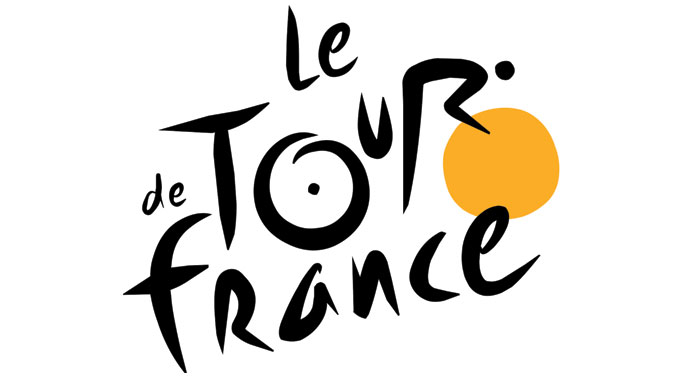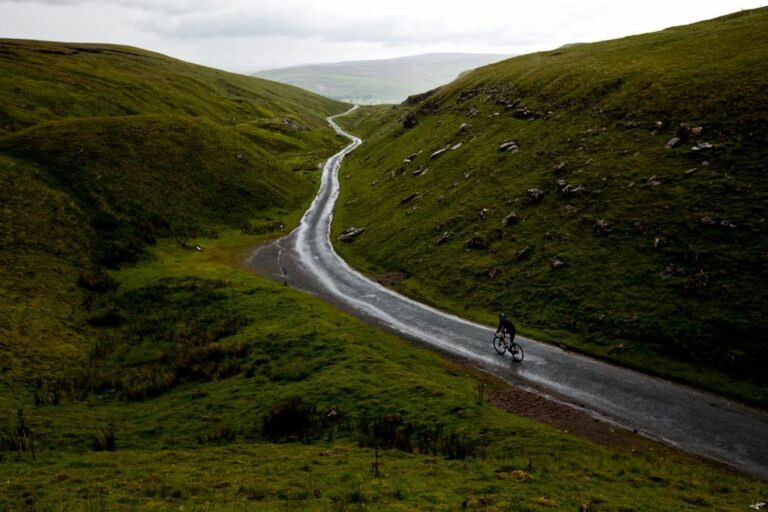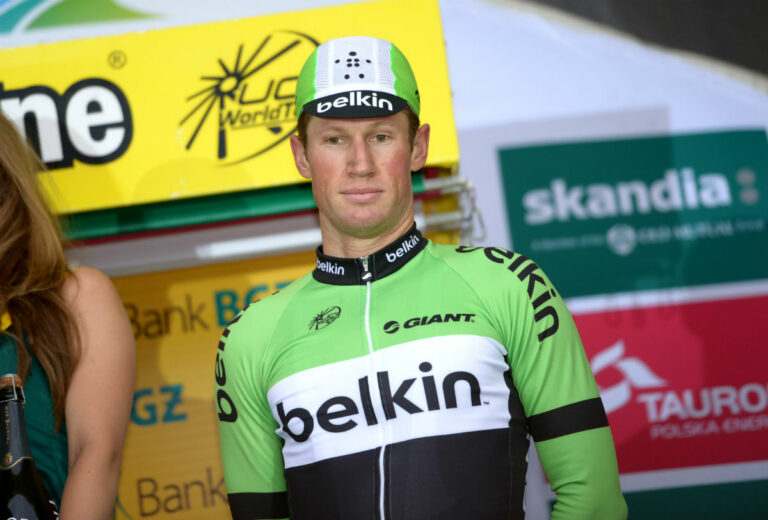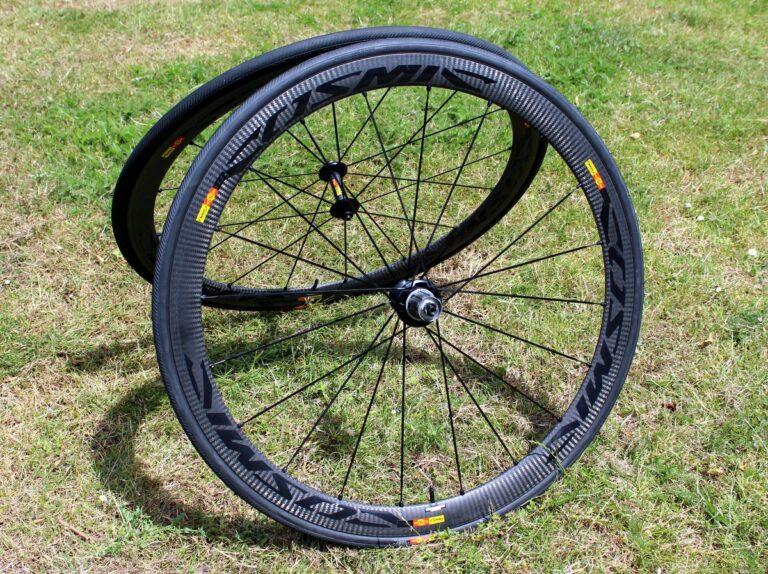By the time you read this, Rémi Gribaudo will have arrived at the Tour de France, sat down with FDJ’s formidable manager, Marc Madiot, and conducted a face-to-face debrief with the team’s mechanics. Any success achieved by the French team at the hundredth Grande Boucle will be due in part to Gribaudo’s designs.
He is the Logistics and R&D Project Manager at Lapierre Bicycles, a French brand based for its entire 66-year history in Dijon, and, since its buy-out by the Dutch Accell Group in 1996, in Hungary, Turkey, and Taiwan. Gribaudo is head of a team of seven engineers, and oversees the technical development of its entire range.

He is responsible for Lapierre’s groundbreaking electronic shock absorber (“Ei Shock”) deployed at the top end of their mountain bike range, and for the Xelius EFI Ultimate and Aerostorm bikes ridden by the FDJ road team in cycling’s elite UCI WorldTour, and, more particularly, in the French national tour.
Le Tour + FDJ = pressure
Gribaudo is confident that his first face-to-face debrief of this year’s Tour will be positive, but under no illusions that his visit to cycling’s greatest race will be anything other than business.
“In big races like that [the Tour], all the staff, all the mechanics, all the riders – everybody’s pretty tired. They make you feel the pressure. If everything is going well, if you go there right after a win, then you are very lucky, but if you go and they’ve had a bad day, a mechanical problem, then it starts to be tough.”
Any success achieved by FDJ at the hundredth Tour de France will be due in part to Gribaudo’s designs
The day before RCUK arrived in Dijon had been a good day for FDJ and, by extension, for Gribaudo. Despite the presence of newly-crowned French road race champion, Art Vichot, and Tour de France stage winners, Pierrick Fédrigo, Sandy Casar, and Thibaut Pinot, the team is not known for its time trialing talent. At the team test in Nice, riding Gribaudo’s new Lapierre Aerostorm, FDJ lost just 42 seconds to winners, Orica-GreenEDGE.
He conducted a debrief with FDJ’s mechanics by telephone while RCUK inspected the showroom sample of the Aerostorm, and told us they were pleased. When he arrives at Le Tour, he will receive face-to-face feedback on the road bike he has designed for FDJ – the Xelius EFI Ultimate.
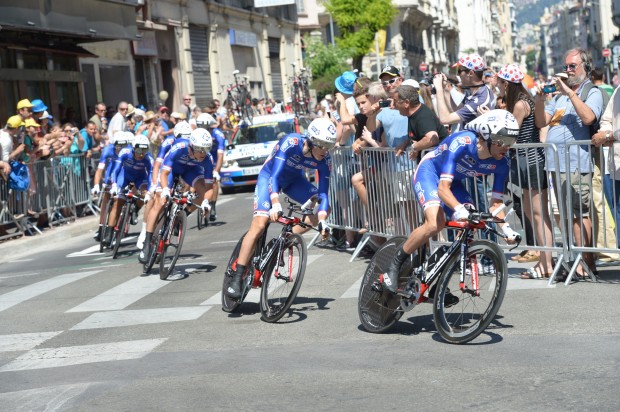
This will not be a new experience for Gribaudo. Three FDJ riders were closely involved in its design, and he tells us proudly it is lighter, stiffer, and half-a-second quicker per kilometre for the same rider power output than its predecessor. Yoann Offredo and Jérémy Roy, winner of the Super Combativity award at the 2011 Tour, joined the veteran Casar to conduct tests on the road, in the wind tunnel at the Magny Cours motor racing circuit, and on a treadmill at L’Université de Franche-Comté, Besançon wide enough to accommodate three riders.
In big races like the Tour, all the staff, all the mechanics, all the riders are pretty tired. They make you feel the pressure
It is Roy’s feedback that Gribaudo values most. The Loire rider is an engineering graduate, and a rider the R&D head describes as “a good translator”, able to describe his experiences on the bike in engineering terms to Lapierre’s design team, and in layman’s terms to his team-mates. Professional riders, he says, are likely to have enjoyed team support from an early age and their mechanical knowledge often suffers as a result. Gribaudo’s test group for the Xelius EFI Ultimate included 20 “good” amateur riders as well as the FDJ trio, to provide a more representative survey.
Gribaudo gives RCUK and the journalists assembled at Lapierre’s Dijon HQ a detailed breakdown of the design and development procedures he has followed to reduce the overall weight of the chassis by 10 per cent and to register double digit increases in stiffness in certain areas.
The starting point of developing the old frame was to consider the different functions of the various tubes. Gribaudo quickly arrived at the somewhat unsurprising conclusion that the primary function of the downtube, bottom bracket, chainstays, and headtube is power transfer.
Headwinds, crosswinds, and rolling roads
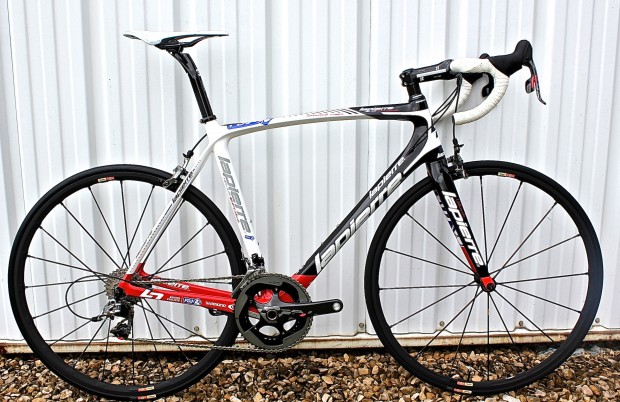
The Xelius EFI Ultimate is not an ‘aerobike’ in the same sense as a time trial machine like the Aerostorm, or perhaps even of road bikes like the Ridley Noah FAST, Scott Foil, or Cervelo S series, but Gribaudo spent considerable time (and investment, according to managing director, Gilles Lapierre,) in the wind tunnel. The FDJ riders were involved in the wind tunnel testing to ensure the final design accounted for airflow over the rider as well as the bike. Gribaudo shows us 3D computer realisations of the air flow over Jérémy Roy. Cross winds and head winds were directed at bike and rider from a variety of angles from zero to 20 degrees and at different speeds. A design that performs well in head winds may be susceptible in cross winds, and vice versa, Gribaudo says.
Gribaudo values the feedback of FDJ rider, Jérémy Roy, the most. The winner of the super combativity award at the 2011 Tour de France is also an engineering graduate
The tube profiles are sculpted, but modest both in size and shape in comparison to some of its rivals. Gribaudo points to the use of continuous carbon fibres in the downtube, bottom bracket and chainstay area to provide stiffness, rather than additional layers. A mix of Toray 40-tonne high modulus fibres, and M30 “high resistance” fibres (stronger, but not as stiff) have been deployed in the Xelius EFI Ultimate’s chassis.
While the frame weight remained the same as its predecessor, the overall weight of the frame and fork package has been reduced by Gribaudo’s decision to use his own fork design, rather than continuing to use the Easton EC90 unit of its predecessor. Lapierre’s fork, available with a cutaway to allow the use of Shimano’s Dura Ace 9000 or Ultegra 6800 aero brake, is the key contributor to an overall weight saving of 10 per cent on the previous model. The reduction in size of the lower headtube bearing – now 1-1/4” as opposed to the industry standard 1.5” of the previous iteration – was introduced for its aero benefit, but is also lighter.
Development was not only limited to the frame’s visible aspects, says Gribaudo. Lots of time has been expended on the internal cable routing in a bid to attain the ambitious target of reducing friction to a level no greater than with an external routing.
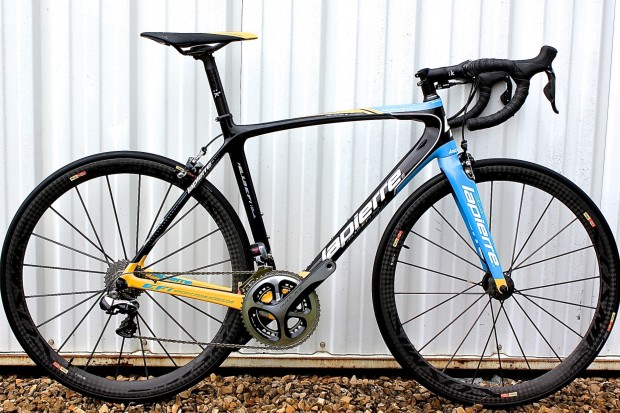
The test data, collected by SRM power metres from a mixture of the wind tunnel and ‘rolling road’ testing described above, and of ‘field’ work on the road, is impressive. The upshot of the combined tests is that a rider will require nine watts less to reach the same speed per kilometre. 15 watts, Gribaudo says, is equivalent to one second, making the Xelius EFI Ulimate approximately half-a-second faster per kilometre for the same power output.
So what next? Bicycle development is relentless. Disc brakes, billed for literally years as ‘the next big thing’, have now arrived, from Shimano and SRAM at least. Gribaudo refuses to put a date on when Lapierre will produce a frame with appropriate mounts. “We are studying everything to make sure we provide a very safe structure and to make sure the braking performance will not be dangerous. We are running some tests, but I cannot provide a date.”
Disc brakes present two issues to a frame designer, says Gribaudo: the force exerted on the frameset, especially on the fork, and heat dissipation
Disc brakes present two issues to a frame designer, says Gribaudo: the force exerted on the frameset, especially on the fork, and heat dissipation. Disc brakes can throw out temperatures sufficiently high to weaken the structure of a carbon frame, he adds. “We have a full-composite structure, which doesn’t like the heating. When you reach a point of 150 degrees, you can destroy the structure. When they are really, really warm, they can be much warmer than that.” A disc brake capable of melting a frame is in no-one’s interest. Gribaudo will run his own tests before he is satisfied.
His attention, for now at least, is entirely focused on the Tour de France and FDJ. The team’s newly-appointed leader, Thibaut Pinot, winner of stage eight in last year’s race, is one of French cycling’s greatest hopes. Nacer Bouhanni, the team-mate Vichot replaced in the tricolore jersey, started the hundredth edition of Le Tour as a Paris-Nice stage winner. Designing a single bike to satisfy the demands of each has been a challenge, but one Gribaudo is confident he has met.

